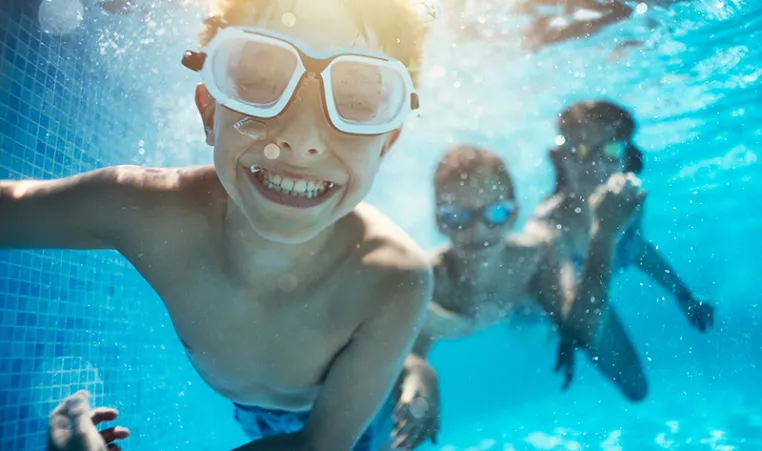May is Water Safety month and pre-summer is a good time to be aware of water safety. From lakes and rivers to oceans and pools, water is everywhere in a North Carolina summer. Be sure you and your family are prepared for a fun, safe summer.
How to Spot Someone in Distress
You've seen movies and television programs that feature a scene with drowning. There is usually a lot of yelling, splashing and commotion. There seems to be a lot of time between when a person notices the swimmer in distress and when a rescue takes place.
But television and movies depict drowning incorrectly.
When a person drowns, they are usually silent. A person struggling for air cannot scream, they are too focused on trying to breathe. Most likely a person or child in distress is bobbing up and down in the water with little to no splashing. To an untrained eye, they can look fine when in reality they can't touch the bottom, can't swim and are now in serious trouble.
“We know that 88 percent of drownings happen under adult supervision. At first glance, parents and caregivers may think a child is playing, but instead, that child is struggling,” said Susan Pettengill, vice president of Healthy Living.
Drowning can happen quickly and quietly. It's essential to watch children closely when water is around, whether that's a swimming pool, lake, ocean or even a bathtub.
Water Safety Tips
As temperatures rise, kids want to cool off, whether that is in home pools, ponds, lakes, rivers, streams, or oceans. The Y wants to make sure parents, caregivers and children make water safety a top priority as they head back to the water this season.
The Y is providing five tips to ensure a safe and enjoyable swimming experience for all.
1. Never swim alone or without a water watcher. When children are swimming, make sure they are actively supervised at all times. Teach your children that they should only swim in locations where a lifeguard is on duty, or where a responsible adult agrees to watch the children in the water without distractions.
2. Supervise your children whenever they’re in or near water. Whether it’s bath time or taking a dip in a pool or lake, make sure your children are within arm’s reach at all times.
3. Don’t engage in breath-holding activities. Children should not hold their breath for a prolonged amount of time while swimming, as this can cause drowning and has several other severe physical side effects.
4. Wear a life jacket. Inexperienced or non-swimmers should wear a Coast Guard-approved life jacket.
5. Don’t jump in the water to save a friend struggling in deep water. If a child finds their friend in deep water unexpectedly, their natural reaction may be to jump in the water to try to save them. Even if a child is a great swimmer, a panicked person will overpower them and easily pull the rescuer underwater.
At the YMCA, our swimmers take a swim assessment and we ask parents to always be in arm's reach of a non-swimmer child. We also provide United States Coast Guard approved floatation devices at our pools and offer swim lessons year-round so everyone can be safe around water.
